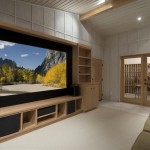What is “Green” Certification and is it Worth it?

Being “Green” doesn’t carry the same heavyweight authority that it did just several years ago. Having a green building and being green certified are two separate things. According to Zillow.com implementing green building practices promotes cost and energy efficiency but is important to attain green certification? This process involves verification by third parties that the residential building meets green standards, confirming that the materials and installation meet program requirements. These fees can very depending which authorities you use such as LEED, Energy Star Or National Green Building Standards. Charges are around $500 per building with an additional $20 per condominium unit.
So what does this mean for people moving into a green certified building?
The construction can be a very involved procedure requiring specific inspections before, during and after construction, but an energy-efficient certified building does not qualify for tax or utility benefits; about the only benefit residents would receive is the benefit of high favor from green certified communities.
Does it really save money? Not all multi family construction professionals really see the benefit. They may be installing LED light bulbs and establishing recycling programs but as far as cost saving strategies over being green certified, construction crews may not see this as a necessity. Is it desirable enough for renters however, that construction companies and developers would do so anyway? According to Strata Research, 77% of renters think green apartments are important when choosing a rental property. However, they value Energy Star appliances the most and say that they be willing to pay more for energy efficient features. But how much more? Is it worth it to get the certification in the hopes that renters will pay more? A green building certification is a one time cost whereas renters pay monthly for the benefit of living in an energy-efficient building. The value realized is not always immediate especially to renters who will most likely only inhabit the units for a short-term. The research showed that renters who pay less than $700 a month in rent are less likely to want to pay more for green features. Those that pay more than $700 are more likely to pay more to live in a green or energy-efficient environment. Additionally, generation Y are also more willing to pay for green housing than older renters.
The goal is to make buildings more sustainable without breaking the bank to do so. We support green building in our area and help renters and homeowners find the right energy efficient property for their needs and their budget.






